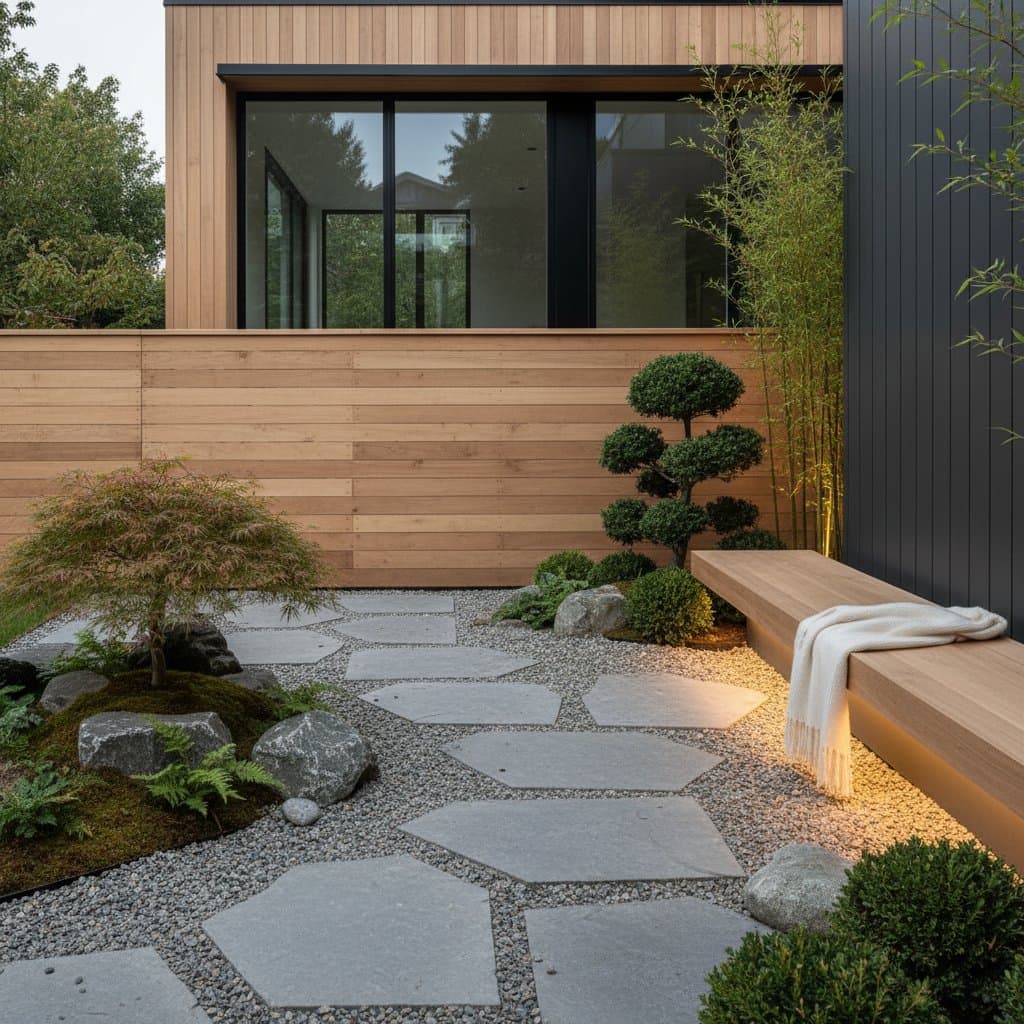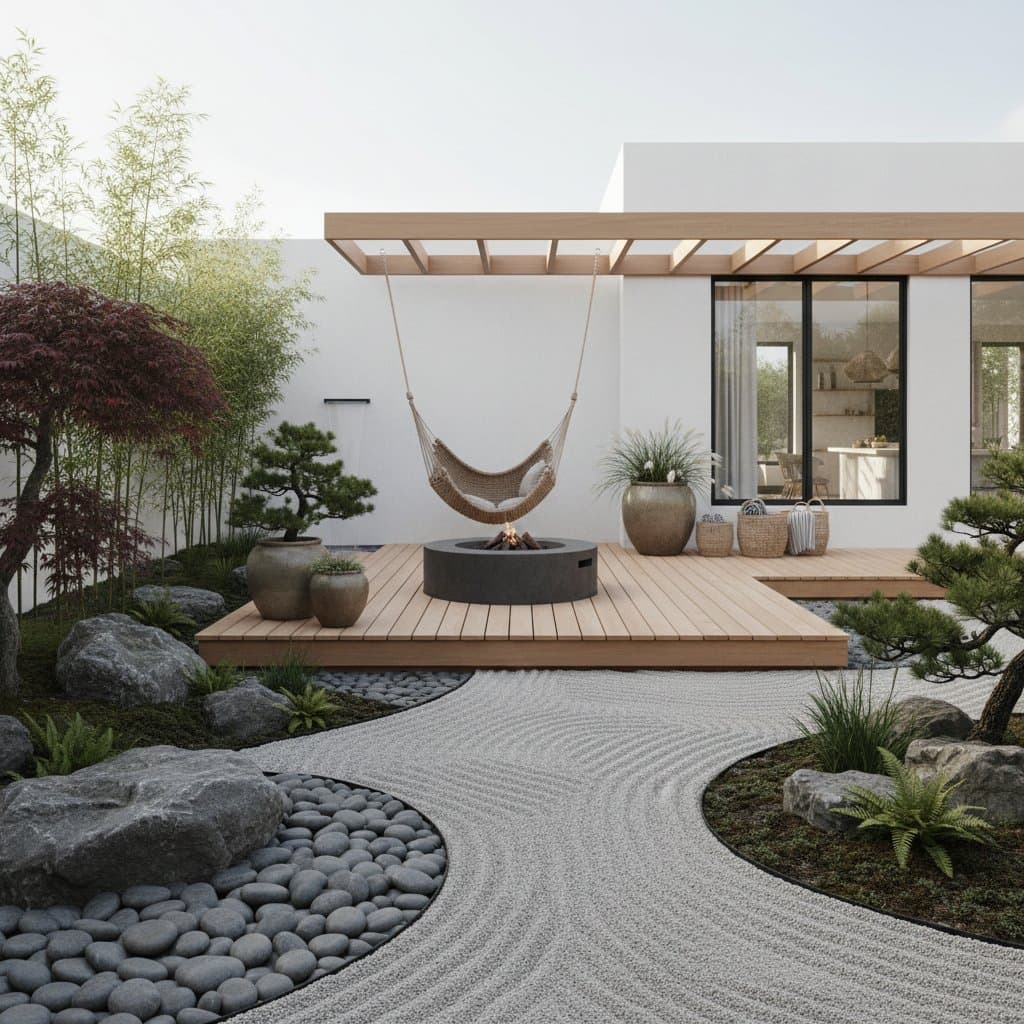Drivers Behind the Pollinator Garden Surge
This trend signals a broader embrace of sustainability and intentional living. Individuals seek homes that actively benefit the environment while maintaining elegance. Interior designer and eco-landscaper Sarah Linton notes, A pollinator garden establishes a thriving ecosystem that serves both residents and nature. It delivers beauty with inherent value.
Pollinators underpin food systems and ecological balance through plant pollination. Providing feeding and shelter havens positions homeowners as contributors to regional conservation efforts.
Urban residents participate readily. Balconies, rooftops, and modest front areas support pollinator plants effectively. A lavender pot on a London balcony or petunia basket in a Brooklyn window box yields meaningful impact.
Integrating Form and Ecology
Pollinator gardens seamlessly combine visual splendor with practical ecology. Colors, textures, and scents abound, complemented by the motion of bees navigating coneflowers, butterflies alighting on verbena, and hummingbirds visiting salvia. This animation surpasses the stillness of conventional landscapes.
Seasonal progression distinguishes them from lawns. Plants bloom in sequence, supplying pollinators year-round and maintaining garden intrigue. Garden designer Marco Duval, operating in Europe and the United States, observes, Wild gardens reveal themselves as orchestrated displays of motion and hue, evolving daily.
Steps to Build a Pollinator Garden
Intention guides the creation of a pollinator garden, regardless of space or expertise. Follow these steps to align the design with your property, routine, and regional conditions.
Select Native Plants
Native varieties form the foundation, thriving in local conditions and drawing indigenous pollinators with reduced upkeep. United States options include black-eyed Susans, purple coneflowers, and milkweed. United Kingdom choices encompass foxgloves, lavender, and primroses.
Consult local nurseries or botanical gardens for tailored plant lists if regional natives remain unclear.
Sequence Blooms for Year-Round Support
Ensure nectar availability from spring to fall by selecting successive flowering plants. Combine early options like crocus and allium with mid-season coreopsis and cosmos, concluding with asters and sedum.
This approach sustains pollinators and extends garden vibrancy.
Incorporate Varied Heights and Textures
Layer low groundcovers, mid-height perennials, and tall shrubs or grasses to enhance dynamics and habitat diversity. Such stratification accommodates multiple pollinator needs.
Eliminate Chemical Inputs
Steer clear of pesticides and herbicides, including those deemed eco-friendly, as they often affect pollinators adversely. Promote natural pest control via beneficial insects such as ladybugs and lacewings.
Provide Water Sources and Shelter
Install a shallow birdbath or pebble-filled dish for drinking access. Incorporate dead wood or hollow stems to offer nesting for solitary bees.
Design for Family Engagement
Involve children in planting and monitoring to cultivate environmental stewardship. Select resilient species like echinacea or lavender that withstand light interaction.
Worldwide Adaptations of Pollinator Gardens
Experiences in the French countryside highlight pollinator gardens universal reach. Provence lavender fields buzz with bee activity through summer. Mediterranean wild thyme and rosemary draw pollinators in arid settings. Japanese urban plots feature flowering shrubs that aid butterflies and ecosystems.
Adaptability defines their global success, with natives and traditions shaping regional styles. Common threads include reverence for pollinating species.
Adapting to Compact or Urban Environments
Limited space poses no barrier to pollinator gardens; vertical and inventive approaches suffice.
- Containers: Cluster pots of assorted sizes near entrances or stairs.
- Window Boxes: Ideal for apartments; pair trailing verbena or nasturtium with upright salvia.
- Vertical Elements: Employ wall planters or trellises for nectar without floor usage.
- Small Plots: A single square meter, densely planted with seasonal variety, aids numerous pollinators.
In polluted urban settings, these gardens restore tranquility. A New York stoop transformed with herbs and perennials became a neighborhood focal point and personal nature anchor amid concrete.
Fostering Family Bonds Through Gardening
Pollinator gardens enrich family interactions profoundly. Children develop intrigue with visiting species, prompting shared observations and records that turn routines into explorations.
They promote outdoor engagement via sensory stimuli of color, aroma, and activity. Families gain lessons in patience, inquiry, and ecological respect, while parents appreciate the mindful pace.
Insights from Horticultural Experts
Balance and attentiveness underpin pollinator garden achievements, per professionals.
- Entomologist and author Dr. Maria Jensen advises, Prioritize plant diversity in form and color over flawless layouts; pollinators favor variety.
- Landscape architect Tom Reyes recommends, Cluster like plants for efficient pollinator foraging and bold visual effects.
- French consultant Lucie Bernard suggests, Preserve unpruned zones post-season; hollow stems and leaf litter host nesting bees.
These principles align with observations across diverse locales. Successful gardens adapt through ongoing monitoring of growth and pollinator preferences.
Harmonizing Design with Home Architecture
Pollinator gardens need not appear chaotic; strategic choices ensure sophistication. Align plant palettes with exterior colors. Employ borders, gravel walks, or low hedges for definition. Rustic wildflowers suit farmhouse aesthetics; structured perennials fit modern facades.
Solar lighting accentuates textures after dark, extending the gardens allure for evening use.
Broader Ecological Contributions
These gardens represent potent conservation steps. One square meter hosts dozens of species, amplifying neighborhood-wide benefits.
They conserve water versus lawns and demand less ongoing care, with natives requiring minimal amendments. Outcomes include time savings, wildlife aid, and persistent beauty.
Nurturing and Observing Garden Evolution
Established pollinator gardens reward with seasonal transformations. Spring bulbs signal renewal, summer delivers abundance, and autumn provides subdued tones amid lingering pollinator presence.
Maintenance emphasizes partnership over dominance, building awareness. Witnessing pollinators at work affirms the gardens living essence.
Launching Your Pollinator Transformation
Begin modestly in a sunlit area with select natives, expanding annually based on insights. Connect with community groups to share progress. Collective efforts create pollinator pathways across locales.
These gardens unite elegance and ecology, restoring ties to vital planetary processes. From expansive lawns to urban steps, meaningful vitality awaits creation.




